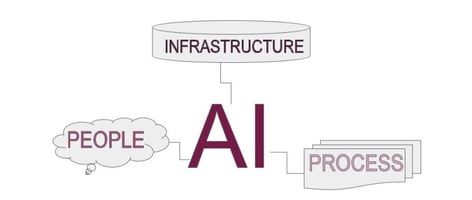Recently, I have been obsessively listening to books about AI, Machine Learning, and Data Analytics...
Is your data analyst-friendly?

The New England Mobile Book Fair




When I was a kid we used to go to this place called the New England Mobile Book Fair. There was nothing mobile about the book fair. It most certainly never moved. It was a sort of warehouse with dense shelves of books, packed so tightly you were almost afraid to walk down the aisles. The exceedingly odd thing about this book store was that its books were organized by publisher and then alphabetically by title. Finding anything specific was almost impossible unless you knew the publisher in advance. I suppose there was some logic to this, but mostly it was annoying unless you were just "browsing by publisher." Apparently, the set up had something to do with making it easier to take inventory.
Even in today’s world, where you can find almost anything instantly online, we still need help in bricks-and-mortar stores. Which aisle do I go down for cereal? Which section has the books on history? Where are the men’s shoes? Someone has spent a good deal of time making sure that the merchandise is laid out with some sort of logic and guiding us with signage. It would definitely be easier for the store to just throw stuff on the shelves in the order it came in through the loading dock.
So what does this have to do with data?
Raw data is a little bit like the New England Mobile Book Fair. To someone with a lot of expertise and detailed knowledge, there is a logic to it. For everyone else, it’s mystifying. It’s not just a matter of visualizing into charts and graphs, either. That might work if you are just an end consumer of data. For an analyst who is tasked with understanding what’s going on in the business, having to know where the data is, run queries, understand which features mean what, transform the data into meaningful metrics, can all be exhaustingly slow. All of the time to do the analysis gets sucked up into just finding the data.
Having the right organizational or “semantic” layer in the data changes the game. Libraries, catalogs, predefined calculations, and meaningful business metrics allow the analysts to quickly dive into what is going on in the business. Someone has to set all this up. It needs to be designed, architected, verified, and maintained. Without someone to manage and maintain this layer, understanding the business becomes painfully slow.
So is there a missing “way-finding” layer in the data? Here are a few tell-tale signs:
- Are there basic business questions that you never seem to be able to answer?
- Does business analysis take days when it seems like it should take minutes or hours?
- Do your analysts seem to spend a lot of time producing reports and very little time actually analyzing anything?
- Do you have a revolving door of young analysts leaving the company because the job is too frustrating?
Investing in making the data “analyst friendly” will be well worth it on all of these fronts.



